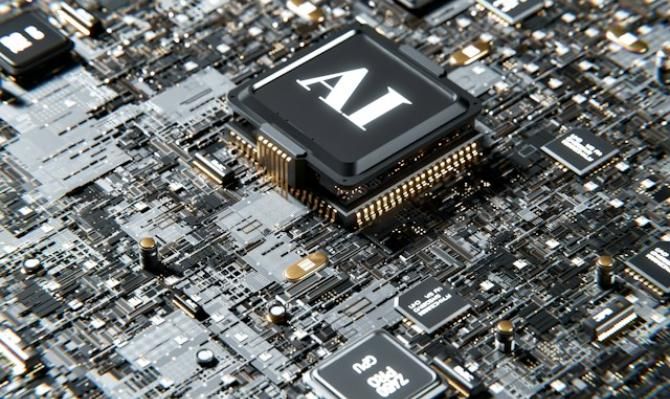US: A model of economic transformation very different from Europe’s
In the US, two major economic investment and modernisation plans have been launched in recent years which represent a very different model from the European one, with a more protectionist approach. The transformative efforts in energy and technology did not arise from the need to boost the economy after COVID, as was the case in the euro area with the European NGEU funds, but rather from the need to strengthen the US’ autonomy and strategic position.

In the US, two major economic investment and modernisation plans have been launched in recent years which represent a very different model from the European one, with a more protectionist approach. The transformative efforts in energy and technology did not arise from the need to boost the economy after COVID, as was the case in the euro area with the European NGEU funds, but rather from the need to strengthen the US’ autonomy and strategic position. Thus, the Creating Helpful Incentives to Produce Semiconductors (CHIPS) Act was created, seeking to reduce the reliance on Asia in semiconductor production, as was the Inflation Reduction Act (IRA), seeking to accelerate the energy transition in the wake of the global energy shock of 2022. Both of these programmes are channelled partly through direct grants, similar to the NGEU funds, but they are also largely channelled through tax incentives that do not require direct federal government spending – a form of incentive that is barely present in the European investment plans. The total amount of these plans comes to around 4.5% of US GDP, similar to the relative weight of NGEU in the EU.

The IRA is the biggest federal climate change response programme in the US, signed in 2022. It seeks to accelerate the transition to a green economy, create jobs and boost economic growth through loans, tax incentives and direct aid in the energy sector. Tax incentives represent the main channel through which the IRA operates, accounting for up to two-thirds of the total budget,1 offering tax credits to households and businesses through to 2032 for making investments in renewable energy, electric cars and energy efficiency.2 The total cost of the programme is uncertain, with initial estimates from the CBO and the Congressional Joint Committee for Taxation of 271 billion dollars in tax credits (nearly 1.2% of GDP), but it could reach as much as 1 trillion dollars (4.3% of GDP) over the programme’s 10-year period. The rest of the IRA is made up of direct investments financed through grants and loans, estimated at an additional 140 billion dollars (0.5% of GDP).
The IRA is still young to estimate the effect it will have on US growth and productive capacity in the long term. However, there are a number of statistics which suggest that its implementation has paid off for now. For instance, using the aggregates of household personal income tax returns in 2023, the Internal Revenue Service (IRS) reported that over three and a half million households applied for some form of IRA credit, saving them 8.4 billion dollars. Similarly, the IRS reported last June that, in the first half of 2024 alone, thanks to IRA deductions, consumers have saved nearly 1 billion dollars in more than 150,000 electric car purchases. In fact, following the implementation of the IRA, sales of electric vehicles increased a remarkable 50% in 2023 alone.
- 1. See CBO estimates: «Estimated Budgetary Effects of Public Law 117-169, to Provide for Reconciliation Pursuant to Title II of S. Con. Res. 14».
- 2. Includes production for energy storage, carbon capture, nuclear energy production, sustainable transportation (biodiesel) and renewable energy production facilities (wind, solar and hydro). For homes, includes installation of solar panels, battery storage and solar water heating, among others.

Other data collected from the MIT Clean Investment Monitor3 show a significant increase in green investments over the past three years. Between 2022 and 2024, these investments reached 683 billion dollars, an increase of more than 150% over those undertaken between 2018 and 2021. Although the increase in investment has been significant, since 2022, the share of electricity generated from renewable energies has increased by just 2 pps, to 22% (although this level is 10 pps above 2014 levels).4 Results have been most notable in the electric vehicles segment in 2024, investments reached 91 billion dollars and sales of electric vehicles (including hybrids) accounted for 21% of all vehicle sales (versus less than 10% in 2021).5
The CHIPS Act, signed in August 2022, seeks to strengthen semiconductor supply chains in the US. The Act allocated 53 billion dollars (0.23% of GDP) for the manufacture and research and development of semiconductors in the country, mainly in the form of grants.6 To date, over 38 billion dollars have been allocated to 48 projects in 23 states, generating more than 115,000 jobs. The protectionist bias of the CHIPS Act is conveyed through a ban on participating companies from expanding semiconductor manufacturing in China and in countries considered to be a threat to US security. It also incorporates a tax credit incentive of up to 25% for specialised investments in the manufacture of equipment needed for semiconductor production that are fully developed on US soil.
- 3. See MIT’s Clean Investment Monitor.
- 4. U.S. Energy Information Administration (2024). «Electric Power Monthly». Washington, D.C.: U.S. Department of Energy.
- 5. U.S. Energy Information Administration (2024). «U.S. share of electric and hybrid vehicle sales reached a record in the third quarter». Washington, D.C.: U.S. Department of Energy. Published on 04/12/2024.
- 6. Of the 53 billion dollars, 39 billion are allocated to a financial assistance programme – also called the CHIPS Fund for America – administered by the US Department of Commerce to build and expand manufacturing facilities. The rest will be used to incentivise the domestic environment for production, including research and development.

The IRA and the CHIPS Act are part of a economic transformation process, necessary in the global power fhit that has been taking place in recent years. The US must address competition from new players in key areas in which it has traditionally played a hegemonic role, such as the case of China.
Trump’s early days in office have made it clear that we will see an escalation of protectionism during his administration. Thus, while the CHIPS Act seems to fit in with White House policies, the IRA appears more threatened. The energy transition is not a priority on his agenda and, in fact, he will seek insofar as possible to increase fossil-fuel energy production. However, revoking the IRA will not be an easy task. Firstly, it was signed into law, which means that the support of both houses of Congress will be needed in order to revoke it. This seems unlikely considering that most of the investments have been made in the Southern and Great Lakes states – which are traditionally Republican-leaning states. What seems more likely is that certain provisions will be overturned or that the White House will place obstacles that will hinder its implementation: for example, delays in the delivery of funds and approvals, or making access to information more difficult.7
- 7. At the close of this publication, the White House has removed the official IRA web page and it can only be accessed through the Biden Administration’s presidential archive, Inflation Reduction Act Guidebook | Clean Energy | The White House, and it cannot be updated.
- 1. See CBO estimates: «Estimated Budgetary Effects of Public Law 117-169, to Provide for Reconciliation Pursuant to Title II of S. Con. Res. 14».
- 2. Includes production for energy storage, carbon capture, nuclear energy production, sustainable transportation (biodiesel) and renewable energy production facilities (wind, solar and hydro). For homes, includes installation of solar panels, battery storage and solar water heating, among others.
- 3. See MIT’s Clean Investment Monitor.
- 4. U.S. Energy Information Administration (2024). «Electric Power Monthly». Washington, D.C.: U.S. Department of Energy.
- 5. U.S. Energy Information Administration (2024). «U.S. share of electric and hybrid vehicle sales reached a record in the third quarter». Washington, D.C.: U.S. Department of Energy. Published on 04/12/2024.
- 6. Of the 53 billion dollars, 39 billion are allocated to a financial assistance programme – also called the CHIPS Fund for America – administered by the US Department of Commerce to build and expand manufacturing facilities. The rest will be used to incentivise the domestic environment for production, including research and development.
- 7. At the close of this publication, the White House has removed the official IRA web page and it can only be accessed through the Biden Administration’s presidential archive, Inflation Reduction Act Guidebook | Clean Energy | The White House, and it cannot be updated.



